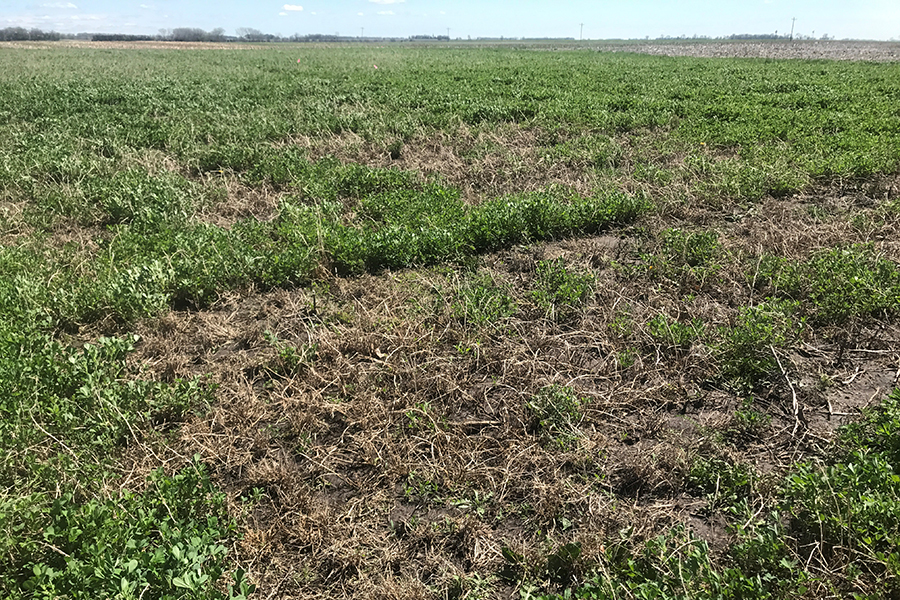Margaret A Smith, PhD
Albert Lea Seed Forage Agronomist
Photo courtesy of Sara Bauder, extension field specialist for agronomy at South Dakota State University.
We continue to get calls this spring about partially winterkilled alfalfa stands with reduced populations. There are usually a number of options to supplement those stands in the early spring, but early spring was so cold and wet this year, in most areas, that farmers had little opportunity to take any action.
Farmers are now waiting to take a first hay harvest and weighing their options immediately after that first cutting. Terminating the stand and planting soybeans is one option.
Air and soil temperatures are increasing and rainfall patterns tend to be more irregular as we move into June and July. Seeding cool-season, perennial species into an existing alfalfa stand is always challenging, but it becomes much riskier after June 1.
Where forage is still needed, the best option to supplement alfalfa yields at this time is a warm-season, annual forage grass.
Options differ based on forage needs and your preferred method of harvest and storage. Interseeding options when soils reach 60o – 62o F include:
| Forage Harvest and Storage Method | Suitable Species | Management Tips | Seeding Rate / Acre Varies depending on how much alfalfa has survived |
| Dry Hay | |||
| Japanese Millet | Multi-cut; does best on soils with medium to high water holding capacity | 20-25 lbs/A | |
| Sudangrass | Multi-cut; seed heavier rate to foster smaller stalk diameter; crimp hard to speed drying in the field | 20-25 lbs/A | |
| Teff | Multi-cut; plant shallow, needs a firmly packed seedbed | 8-12 lbs/A | |
| German Foxtail Millet | Single cut; dries well | 15-20 lbs/A | |
| Baleage | Options above, plus: | ||
| Hybrid Pearl Millet | Multi-cut | 15-20 lbs/A | |
| Sorghum x Sudangrass (S x S) Hybrids | Multi-cut | 15-25 lbs/A | |
| Silage | Options above, plus: | ||
| Forage Sorghum | Single cut in September; doesn’t allow best use of surviving alfalfa | 8-10 lbs/A | |
| Corn Silage | Single cut in September; doesn’t allow best use of surviving alfalfa | 25,000 to 32,000 seeds/A | |
| Photoperiod Sensitive (PPS) S x S Hybrids | Single cut in September; doesn’t allow best use of surviving alfalfa | 15-25 lbs/A |
Warm-season, annual forage grasses do best when seeded ½” – 1 ¼” deep. They can be no-till drilled into the alfalfa following the first hay cutting. Attempts to broadcast on an undisturbed soil surface and dragging to incorporate, or seeding with a Brillion-type seeder will be much less effective.
Teff is an exception; it has very small seed, so needs to be planted only 1/8” – ¼” deep, and needs a firm seedbed. A Brillion-type seeder can work fairly well in an established hay field.
If alfalfa stands are at less than 50%, adding grasses to the stand will increase N fertility needs. Warm-season grasses will use about 30 lbs of N per ton of forage dry matter produced. Some of that will be provided by the alfalfa, with less from more depleted stands. We suggest applying 30-50 lbs N at planting and, if moisture conditions are favorable for regrowth, follow up after the first grass cutting with an additional 30-40 lbs/A.
